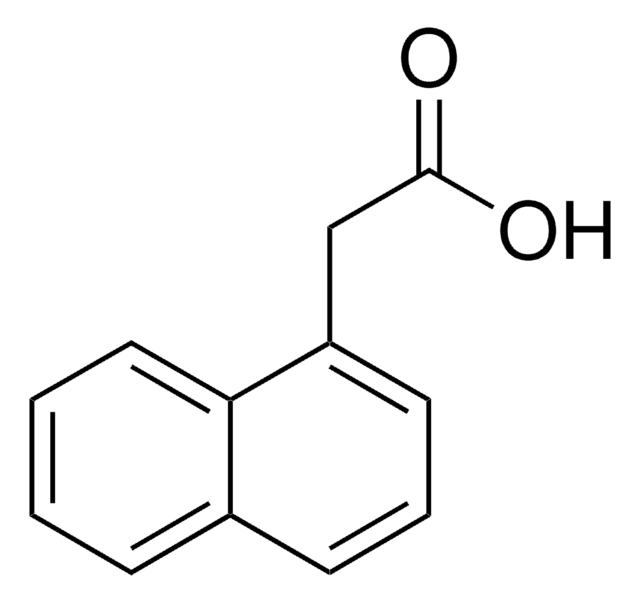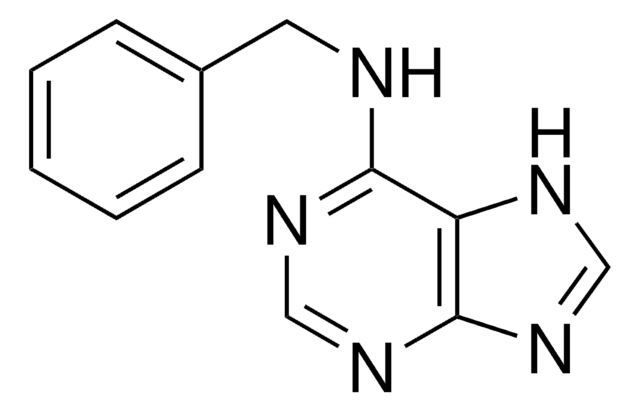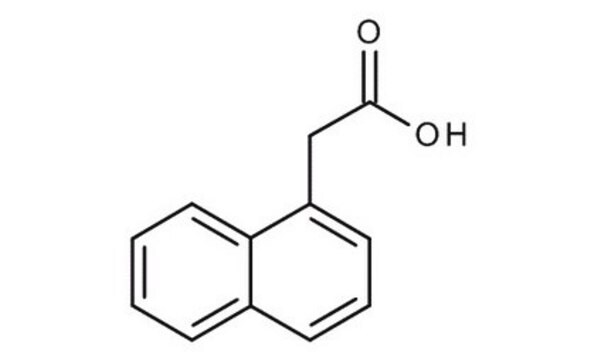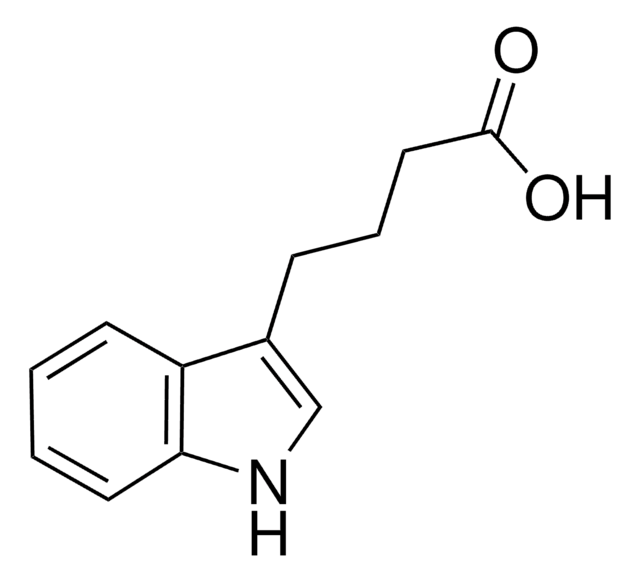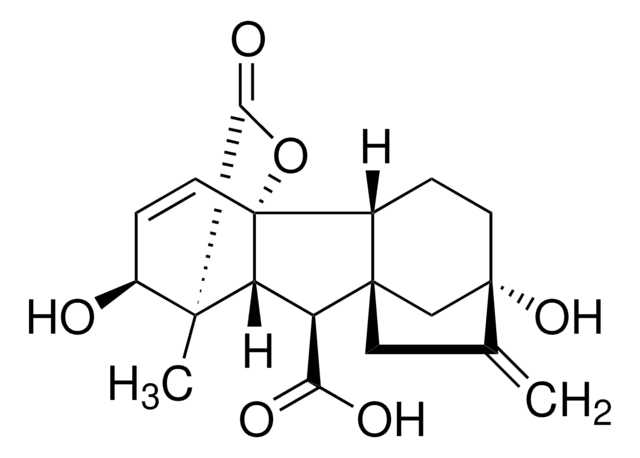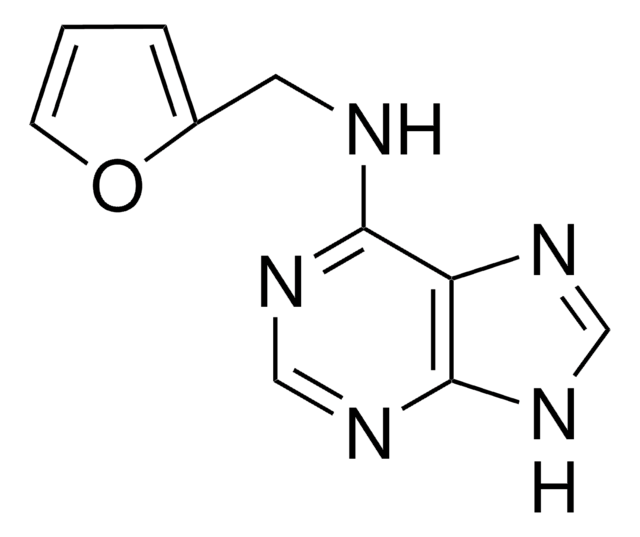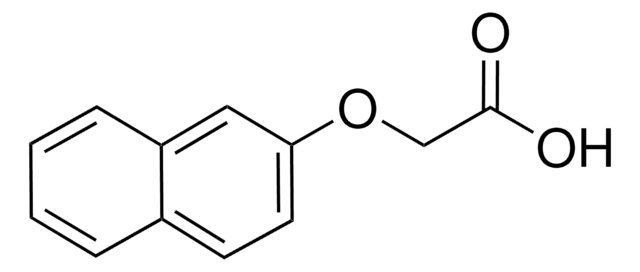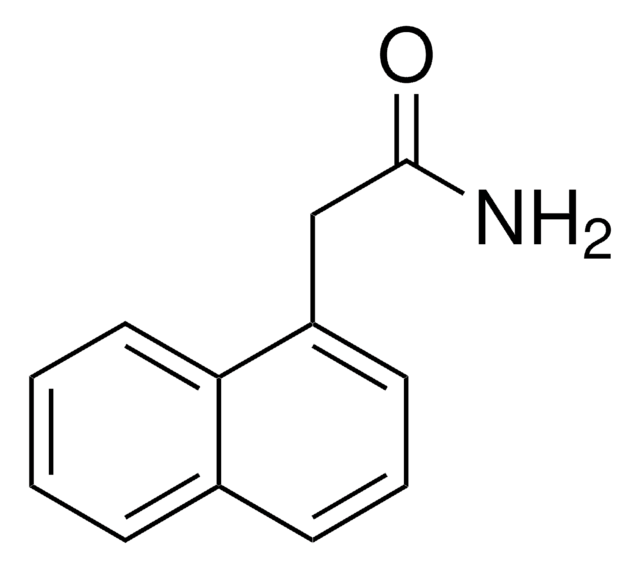N1641
1-Naphthylacetic acid
BioReagent, 1 mg/mL, suitable for plant cell culture
Sinónimos:
α-Naphthaleneacetic acid Free acid, 1-Naphthaleneacetic acid, NAA
About This Item
Productos recomendados
esterilidad
sterile-filtered
Nivel de calidad
Línea del producto
BioReagent
Formulario
solution
concentración
1 mg/mL
técnicas
cell culture | plant: suitable
mp
129-131.5 °C (lit.)
aplicaciones
agriculture
temp. de almacenamiento
2-8°C
cadena SMILES
OC(=O)Cc1cccc2ccccc12
InChI
1S/C12H10O2/c13-12(14)8-10-6-3-5-9-4-1-2-7-11(9)10/h1-7H,8H2,(H,13,14)
Clave InChI
PRPINYUDVPFIRX-UHFFFAOYSA-N
Información sobre el gen
human ... CCKAR(886) , CCKBR(887)
Aplicación
¿No encuentra el producto adecuado?
Pruebe nuestro Herramienta de selección de productos.
Código de clase de almacenamiento
12 - Non Combustible Liquids
Clase de riesgo para el agua (WGK)
WGK 1
Punto de inflamabilidad (°F)
Not applicable
Punto de inflamabilidad (°C)
Not applicable
Elija entre una de las versiones más recientes:
¿Ya tiene este producto?
Encuentre la documentación para los productos que ha comprado recientemente en la Biblioteca de documentos.
Los clientes también vieron
Nuestro equipo de científicos tiene experiencia en todas las áreas de investigación: Ciencias de la vida, Ciencia de los materiales, Síntesis química, Cromatografía, Analítica y muchas otras.
Póngase en contacto con el Servicio técnico